
Good Prose: The Art of Nonfiction
by
Tracy Kidder
and
Richard Todd
Published 15 Jan 2013
ALSO BY TRACY KIDDER The Soul of a New Machine House Among Schoolchildren Old Friends Home Town Mountains Beyond Mountains My Detachment Strength in What Remains ALSO BY RICHARD TODD The Thing Itself ABOUT THE AUTHORS TRACY KIDDER graduated from Harvard and studied at the University of Iowa. He has won the Pulitzer Prize, the National Book Award, the Robert F. Kennedy Award, and many other literary prizes. The author of Strength in What Remains, My Detachment, Mountains Beyond Mountains, Home Town, Old Friends, Among Schoolchildren, House, and The Soul of a New Machine, Kidder lives in Massachusetts and Maine.
…
Kidder, no doubt encouraged by my grumblings, had already formed a low opinion of the interloper who was threatening the clubhouse good spirits of the magazine where we had both been trying to make our mark. Kidder did not take this rebuff well. The Atlantic was to publish an excerpt, actually a condensation, of his forthcoming book, The Soul of a New Machine. This was logical—not only was it an Atlantic Monthly Press book, but it had virtually been written in the offices of the magazine—and it was also good news for the book’s prospects. By this time, the book had been copyedited, but it still had to go through the magazine’s own routine. Kidder’s galleys now faced Whitworth’s scrutiny.
…
The prospect of looking into computers seemed daunting and drab, as drab as the word “engineering.” I wish I could claim that I was the sort of daring young reporter who would press forward and let himself be proven wrong. In fact I took Todd’s suggestion because just then I couldn’t think of anything else to look into. Three years later I had a book, The Soul of a New Machine. Todd’s idea turned out to have been, at the very least, timely. The personal computer did not yet exist. Computers were still curiosities, but they were arousing great interest, in part because the business in those machines was already producing vast amounts of wealth. The Atlantic published excerpts of the book, and, probably more important commercially, so did a trade magazine widely distributed among people involved in the computer business.
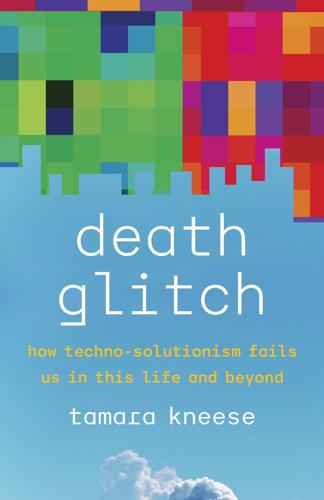
Death Glitch: How Techno-Solutionism Fails Us in This Life and Beyond
by
Tamara Kneese
Published 14 Aug 2023
Some technologists preprogram their smart devices to die or automatically update to prevent them from being hacked. But, ultimately, these smart objects are going to make for very weird inheritances. Tom West was a futurist, but he did not plan for his smart home’s afterlife. Before his death in 2011, West was a leading engineer at Data General Corporation and the subject of Tracy Kidder’s book The Soul of a New Machine (1981).34 In an obituary in the New York Times, Jessamyn West, a librarian, said of her father, “He knew a million things—it didn’t matter: worms, plumbing, literature. He could give you a discourse. It seemed like he could never rest until he had a sense of control over the things around him.”35 West also stated that her father’s set routines gave him the freedom to think.
…
Barassi, Child Data Citizen. 31. Conner, “10 Weirdest Things.” 32. Wilson, “Alexa’s Creepy Laughter.” 33. Canales, “Siri, Cortana, and Alexa.” For more on the problems with virtual assistants and speech recognition technology in relation to gender and disability, see Alper, “Talking Like a Princess.” 34. Kidder, The Soul of a New Machine. The computer historian Thomas Haigh published a brief, nostalgic note about Kidder’s book, pointing out that it is “unashamedly masculine” in its presentation; the lone woman on the team is hardly mentioned. Haigh argues that this is part of the book’s lasting appeal, creating a sense of rugged, taciturn masculinity in the field.
…
Long Now Foundation Ideas, June 15, 2011. longnow.org/ideas/02011/06/16/clock-in-the-mountain/. Kennedy, Jenny, Bjorn Nansen, Michael Arnold, Rowan Wilken, and Martin Gibbs. “Digital Housekeepers and Domestic Expertise in the Networked Home.” Convergence 21, no. 4 (2015): 408–22. doi.org/10.1177/1354856515579848. Kidder, Tracy. The Soul of a New Machine. New York: Little, Brown, 1981. Kirkpatrick, David. “Facebook’s Plan to Hook Up the World.” CNN, May 24, 2007. money.cnn.com/2007/05/24/technology/facebook.fortune. Kneese, Tamara. “Breakdown as Method.” Media Theory 4, no. 2 (2022): 141–66. Kneese, Tamara. “Death, Disrupted.” continent 8, no. 1–2 (2019): 70–75. https://continentcontinent.cc/archives/issues/issue-8-1-2-2019/death-disrupted.
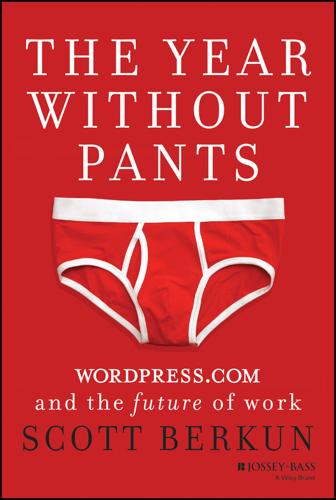
The Year Without Pants: Wordpress.com and the Future of Work
by
Scott Berkun
Published 9 Sep 2013
Hire Self-Sufficient, Passionate People I did see things that would be serious problems at an ordinary company. But these issues were generally compensated for by the talents, passions, and collaborations of Automatticians. Watching coworkers at Seaside, their exuberance was undeniable. They'd do this work on their own time, for pleasure. In his classic book The Soul of a New Machine, Tracy Kidder noticed that Data General's efforts to hire people with strong internal motivations changed things: “Labor was no longer coerced. Labor volunteered. When you signed up you in effect declared, ‘I want to do this job and I'll give it my heart and soul.’”6 Of course, the mission of WordPress to democratize publishing is easier to be passionate about than, say, cleaning toaster ovens.
…
However, ROWE was never mentioned once at Automattic. 5 See Alex Williams, “Working Alone, Together,” New York Times, May 3, 2013, http://www.nytimes.com/2013/05/05/fashion/solo-workers-bond-at-shared-workspaces.html?_r=0 for background. For a directory of spaces around the world, see http://wiki.coworking.com/w/page/29303049/Directory. 6 Tracy Kidder, The Soul of a New Machine (New York: Back Bay Books, 2000), 63. 7 Valve Handbook for New Employees (Bellevue, WA: Valve Corporation, 2012), http://www.valvesoftware.com/company/Valve_Handbook_LowRes.pdf. 8 Franz Kafka, The Trial (New York: Oxford University Press, 2000). Chapter 9 Working the Team After the company meeting at Seaside, Team Social gained momentum.
…
See Company meeting (Seaside, Florida) Self-host builds Self-test builds Self-toast builds Shipping: cathedral-vs. bazaar-style thinking about; incomplete work; management's emphasis on; by Microsoft Internet Explorer team; two-week work cycle's impact on; at WordPress.com Shopcraft as Soulcraft (Crawford) Shreve, Justin Skelton, Andy Skype: advantage of working in; Automattic communication via; information known about coworkers when using; manually entering names into; meetings to review spreadsheets; private chats on Solomon, Evan The Soul of a New Machine(Kidder) Sphere Spittle, Andrew Spreadsheets, for schedules Stallman, Richard Stats plug-in Stop Online Piracy Act Subscription Notification feature Succession planning Support: kept from infringing upon creativity Sutton, Bob Sutton, Hew SXSW, Jetpack launch at T Team Akismit Team Data Team Happiness: author's training work with; bug management by; defined; monitoring work of; tickets as focus of; work project ideas from Team Janitorial Team lead: Adams as; assigning work to widely geographically distributed team members; experiment with outsider as; as first hierarchy at Automattic; job of, at Athens team meeting; Lebens as; “managing up” as responsibility of; presentation by, at Budapest company meeting; report by, at Automattic board of directors meeting Team NUX (New User Experience) Team Polldaddy Team Post Postmodernism Team Social: arrived late for employee group photo Team Social meet-up (Athens, Greece): author's arrival in Athens; discussion about taking on Highlander project; as first Automattic team meet-up; homeless child encounter; Mullenweg as facilitator of culture at; Parthenon as inspiration; play during; short break after; small feature shipped; work on Highlander; working in Hotel Electra lobby Team Social meet-up (Hawaii); experiments at; play during; replacement team lead selected and installed Team Social meet-up (Lisbon, Portugal): choice of time and place for; experiments at; larger size of team at; play during; traditions for getting feedback at Team Social meet-up (New York City): play during; town hall meeting broadcast from; work on Jetpack Team Social meet-up (Portland, Oregon); meeting preceding; play during; site for; work on Highlander at Team Social mini-team meet-up (San Francisco) Team Social's P2: creation of; first post on; header updated; IntenseDebate postmortem on; new photo and team name on; pants running joke on Team Theme Team Titan Team Vaultpress Team VIP Teams: advantage of small-sized Textpattern Thinking: attempt to encourage holistic, about WordPress; cathedral-vs. bazaar-style, about shipping; cathedral-style, about customer service; incremental; long-term, at Automattic; shifting between short-and long-term Thomas, Matt Thompson, Jody Tickets: author's work on; as focus of customer support work; monitoring work on Town hall meetings: August 2010 (from San Francisco); February 2011 (from New York City) TRAC (bug database) Traditions: “blank in a blank” photos; as element of workplace culture; for getting feedback at team meet-ups; of work as serious and meaningless Training Transparency: of communications; as element of WordPress philosophy True Ventures Trust: importance for teams; necessary for managing teams; patience as manifestation of; working remotely as kind of T-shaped employees Tumblr U Updates P2 Usability User interface: complicated, for WordPress; designed first; Highlander; Jetpack; for Post Postmodernism team improvement V Vacation policy Valdrighi, Michel Values Valve (game company) Ventura, Matas Venture capital (VC) firms Voice W Warner, Tom Preston Westwood, Peter Willet, Lance WordCamp WordPress: author's use of; Automattic's continued investment in; company founded to ensure future of; complex design of; complicated user interface of; development of; distinction between WordPress.com, Automattic and; features built to decrease abandoning blogs; increasing popularity of; mission of; open source as central principle of WordPress culture: development and spread of; philosophy underlying; volunteerism as element of WordPress.com: about Work Working remotely: adjustment required for; author's opinion of; Automatticians' satisfaction with; communication when; commute when; connections with coworkers when; increasing prevalence of; as kind of trust; location options; misperceptions of; no financial advantage to company; as norm at WordPress.com; poll of author's blog readers about; psychology necessary for Writing: advantages of, vs. regular jobs; books vs. customer support tickets; exiting Automattic to concentrate on; WordPress's role in Writing Helpers Photo Credits Most photos in this book were taken by the author.

Coding Freedom: The Ethics and Aesthetics of Hacking
by
E. Gabriella Coleman
Published 25 Nov 2012
—Charles Dickens, A Tale of Two Cities In 1981, journalist Tracy Kidder published The Soul of a New Machine, which earned a Pulitzer Prize for its incisive commentary on the heightened commercial turn in computing during the late 1970s and early 1980s. The book ends pessimistically with a programmer lamenting how managers at large computer firms robbed the “soul” of computing away from their makers: “It was a different game now. Clearly, the machine no longer belonged to its makers” (Kidder 1981, 291). In 1984, a few years after the Soul of a New Machine hit bookstores, Stallman also spoke of the soulless state of computing when he lamented the tragic end to hacking in starkly cultural terms: “I am the last survivor of a dead culture.
…
Cultural Anthropology 20 (2): 185–214. 2008. Two Bits: The Cultural Significance of Free Software. Durham, NC: Duke University Press. Kenigsberg, Amos. 2001. Peace, Love, and Marketing. Mother Jones, July 20. http://motherjones.com/politics/2001/07/peace-love-and-marketing (accessed August 24, 2011). Kidder, Tracy. 1981. The Soul of a New Machine. Boston: Little, Brown and Company. Klein, Naomi. 2008. The Shock Doctrine: The Rise of Disaster Capitalism. New York: Henry Holt and Company. Kollock, Peter. 1999. The Economies of Online Cooperation: Gifts and Public Goods. In Communities in Cyberspace, ed. Marc A. Smith and Peter Kollock, 219–39.
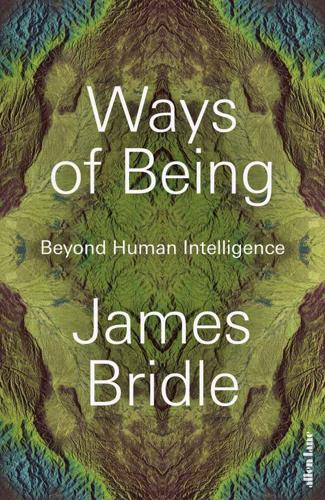
Ways of Being: Beyond Human Intelligence
by
James Bridle
Published 6 Apr 2022
This was an imperial imagining of time, led by Europe and North America: the result was the erasure of local differences, the oppression of workers and subjects, and the suppression of other ways of being in time. Today, time is imagined by our machines – the ticking of the microprocessor and the oscillating signal of the GPS satellite, which maintains a universal, globalized time code accessible anywhere on Earth and accurate to ten billionths of a second. In The Soul of a New Machine, Tracy Kidder’s account of the development of the Data General Eclipse MV/8000, an early microcomputer, in the late 1970s, the author records the experience of one engineer whose work involved testing the new computer for bugs. To do this, he used a device called a logic analyser, which took snapshots of the machine’s internal state every nanosecond – every billionth of a second, an almost unimaginable fraction of time.
…
Craig Welch, ‘Half of All Species are on the Move – and We’re Feeling It’, National Geographic, 27 April 2017; https://www.nationalgeographic.com/news/2017/04/climate-change-species-migration-disease/. 4. For a comprehensive overview of the creation and implementation of global time, see Vanessa Ogle, The Global Transformation of Time 1870–1950 (Cambridge, MA: Harvard University Press, 2015). 5. Tracy Kidder, The Soul of a New Machine (New York: Little, Brown and Company, 1981). The engineer comfortable with nanoseconds was Ed Rasala; the one who left for Vermont was Josh Rosen. 6. For a longer account of the Marsham Record, see I. D. Margary, ‘The Marsham Phenological Record in Norfolk, 1736–1925, and Some Others’, Quarterly Journal of the Royal Meteorological Society, 52(217), January 1926, pp. 27–54; DOI:10.1002/qj.49705221705.
…
Haraway, Staying with the Trouble: Making Kin in the Chthulucene, Duke University Press, 2015 Roger Harnden and Allenna Leonard (eds.), How Many Grapes Went Into the Wine: Stafford Beer on the Art and Science of Holistic Management, John Wiley & Sons, 1994 Graham Harvey, Animism: Respecting the Living World, C Hurst & Co, 2017 Stefan Helmreich, Alien Ocean: Anthropological Voyages in Microbial Seas, University of California Press, 2008 Jason Hribal, Fear of the Animal Planet: The Hidden History of Animal Resistance, AK Press, 2011 Aldous Huxley, Island, Harper, 1962 Humphrey Jennings, Pandaemonium 1660–1886: The Coming of the Machine as Seen by Contemporary Observers, The Free Press, 1986 Tracy Kidder, The Soul of a New Machine, Little Brown & Co, 1981 Robin Wall Kimmerer, Braiding Sweetgrass: Indigenous Wisdom, Scientific Knowledge and the Teachings of Plants, Penguin, 2020 Barbara Kingsolver, Flight Behaviour, Faber & Faber, 2012 Eduardo Kohn, How Forests Think: Toward an Anthropology Beyond the Human, California University Press, 2013 Peter Kropotkin, Mutual Aid: A Factor of Evolution, Freedom Press, 2009 Bruno Latour, Down to Earth: Politics in the New Climatic Regime, Polity Prss, 2018 Ursula K.
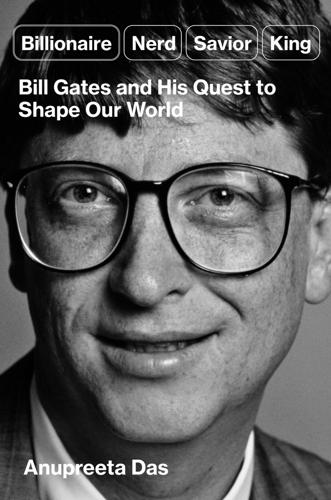
Billionaire, Nerd, Savior, King: Bill Gates and His Quest to Shape Our World
by
Anupreeta Das
Published 12 Aug 2024
Within a decade of Brand’s piece, with the personal computing revolution at their doorstep, the anticommercial ethos of the hobbyists, the computer bums, and the hackers had been tamed by the staid ambitions of capitalism. The hacker was dragged from the frontier to the mainstream. At the same time, the conditions deemed essential to their success—the solitary environment free of traditional management rules, the competitiveness, the idea of work as its own reward—were kept intact. In The Soul of a New Machine, published in 1981, the author Tracy Kidder described the race between two computer hardware companies, Data General and Digital Equipment Corporation, to build a new personal computer. Kidder, who won a Pulitzer Prize for the book, not only takes the reader into the deepest reaches of the computer itself, but also places us amid the dozens of young, sleep-deprived and sometimes self-taught engineers who work on their projects without a break, only the shadows on their chins marking the passing of time.
…
The Microsoft Antitrust Cases: Competition Policy for the Twenty-First Century. Cambridge, MA: MIT Press, 2014. Giridharadas, Anand. Winners Take All: The Elite Charade of Changing the World. New York: Vintage Books, 2019. Isaacson, Walter. Steve Jobs. New York: Simon & Schuster Paperbacks, 2021. Kidder, Tracy. The Soul of a New Machine. Boston: Back Bay Books, 2000. Kohlenberger, Judith. The New Formula for Cool: Science, Technology, and the Popular in the American Imagination. Transcript Publishing, 2016. Lewis, Michael. The New New Thing: A Silicon Valley Story. New York: W.W. Norton, 2000. Loomis, Carol, ed. Tap Dancing to Work: Warren Buffett on Practically Everything, 1966–2012.
…
Paul, Minn., 13 Salesforce, 181, 259 Sánchez, Lauren, 144 Sandberg, Sheryl, 54, 263 Sanders, Bernie, 257–258, 260 Sandy Hook Elementary School, 246 Saturday Night Live, 53 Saunders-Hastings, Emma, 187 Sawyer, Diane, 148 Scarry, Richard, 109 Schervish, Paul, 194 Schmitz, Hans Peter, 136 Schultz, Howard, 139 Schwarzman, Stephen A., 26, 120 Scialfa, Patti, 159 science, technology, engineering, and math (STEM) fields, 53 Scott, MacKenzie, 45, 144–145, 170, 191, 204, 263 SD Biosensor, 176 Seattle, Wash., 34, 66–67 Seattle Computer Products, 35 Seattle Post-Intelligencer, 155, 159 Seattle Public Library, 98 Seattle University, 22, 171 Seitz, John, 27 self-made, 262–263 Senate Finance Committee, 258 Seshadri, Vignesh, 249–250 Seven Samurai (film), 44 sexual abuse, 22 sexual harassment, 238–243 Shafik, Minouche, 193 Shah, Rajiv, 182 Sharp, Isadore, 213 Sheldon (fictional character), 52–53 Sheraton New York Times Square Hotel, 125 Shiva, Vandana, 190 Shoe Dog (Knight), 11 Signature Aviation, 213 Siino, Rosanne, 43, 55–56, 58 Silicon Graphics, 43 Silicon Valley, 48, 55 Silicon Valley (TV show), 52–53 Silicon Valley Bank, 49 Silicon Valley Community Foundation, 205 Simpsons, The, 93 Singer, Peter, 205 Sinofsky, Steven, 228 sitcoms, 53 Sixteen Candles (film), 51 Sloan School of Management, 69 small-dollar donations, 25, 29 smartphones, see iPhones Smil, Vaclav, 101 Smith, Brad, 82 Smith, Robert, 157, 263 Snowflake Computing, 33 social franchising, 200 social media platforms, 107 Social Network, The (film), 52 Softimage, 70 Sonsini, Wilson, 78 Soon-Shiong, Patrick, 273 Sorkin, Andrew Ross, 260 Soros, George, 202, 245, 272 Soul of a New Machine, The (Kidder), 40 South Carolina, 272 Spacewar (game), 39 “Spacewar: Fanatic Life and Symbolic Death Among the Computer Bums” (Brand), 38 SpaceX, 10 Spelman College, 193 spend-down foundations, 280–281 Spielberg, Steven, 100 Spiers, Elizabeth, 49 Springsteen, Bruce, 159 Springsteen, Jessica, 159 S&P 500 stock market index, 28, 44 Square, 204 Sridhar, Devi, 248 Srinath, Ingrid, 196 Staley, James E., 229–231, 232 Standard Oil, 62–64 Stanford University, 48, 50, 56, 57, 73, 74, 98, 159 Stanley Farms, 211 Starbucks, 139 Star Trek (film), 51 start-up founder myths, 47–49 Staten Island, N.Y., 20 STEM (science, technology, engineering, and math) fields, 53 Sterling, Alton, 13 Steyer, Tom, 273 Stone, Roger, 247 Stoneham, Mass., 10 Stonesifer, Patty, 98 Stranger Things, 51 Strategic Property Partners, 208 Streeter, Thomas, 41, 47 Strive Capital, 272 Sturken, Marita, 244 Succession (TV show), 112 Summers, Larry, 229, 237 Sunderland, Julie, 192 Sun Microsystems, 41 Sun Valley, Idaho, 9–10, 12–14, 54 Superstorm Sandy, 21 Supreme Court, 22, 109, 167, 171 Surrender (Bono), 100 Susan Thompson Buffett Foundation, 122 Suzman, Mark, 127, 189, 193 Swachh Bharat Abhiyan (Clean India Mission), 194 Swenson, Signe, 233 Sydow, Bob, 215–216 Tahrir Square, 255 Tampa, Fla., 207–209 Tampa Bay Lightning, 207–208 Tarbell, Ida, 64 Tax Reform Act of 1969, 27 TB, 200, 277 technology sector, of economy, 44–46 TED talks, 101, 246–247 telemedicine, 200 TerraPower, 223 Tesla, 10, 44 Thatcher, Michael, 147 Theranos, 50 Thiel, Peter, 44, 56, 272 Thomas, Clarence, 272 3G Capital, 13 Tia (company), 165 Tierney, Tom, 193 Tilden Foundation, 120 Time magazine, 43, 50, 70, 100, 154, 181 Time’s Up movement, 239 TIPS (Treasury Inflation-Protected Securities), 214 Titan: The Life of John D.
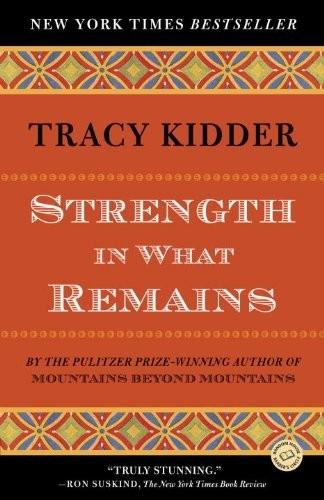
Strength in What Remains
by
Tracy Kidder
Published 29 Feb 2000
ALSO BY TRACY KIDDER The Soul of a New Machine House Among Schoolchildren Old Friends Home Town Mountains Beyond Mountains My Detachment To Christopher Henry Kidder Though nothing can bring back the hour Of splendor in the grass, of glory in the flower; We will grieve not, rather find Strength in what remains behind; In the primal sympathy Which having been must ever be; In the soothing thoughts that spring Out of human suffering; In the faith that looks through death, In years that bring the philosophic mind. —WILLIAM WORDSWORTH, “Ode: Intimations of Immortality from Recollections of Early Childhood” CONTENTS Author’s Note Introduction: Burundi, June 2006 PART ONE FLIGHTS PART TWO GUSIMBURA Epilogue Acknowledgments Some Historical Notes Sources AUTHOR’S NOTE Out of what I hope is an excess of caution, I have changed the names of many people and places in Burundi.
…
ABOUT THE AUTHOR TRACY KIDDER graduated from Harvard, studied at the University of Iowa, and served as an army officer in Vietnam. He has won the Pulitzer Prize, the National Book Award, the Robert F. Kennedy Award, and many other literary prizes. The author of Home Town, Old Friends, Among Schoolchildren, House, The Soul of a New Machine, Mountains Beyond Mountains, and My Detachment, Kidder lives in Massachusetts and Maine. Copyright © 2009 by John Tracy Kidder All rights reserved. Published in the United States by Random House, an imprint of The Random House Publishing Group, a division of Random House, Inc., New York.

Life After Google: The Fall of Big Data and the Rise of the Blockchain Economy
by
George Gilder
Published 16 Jul 2018
The Dalles is only a piece of Google’s global data center empire, which comprises some two million servers at fifteen sites from Singapore to Quilicura, Chile. 3. Jaron Lanier, Who Owns the Future? (New York: Simon & Schuster, 2013), 53 and passim. 4. Gordon Bell, “Bell’s Law for the Birth and Death of Computer Classes,” Communications of the ACM. 51 (1), January 2008: 86–94. 5. Described by Tracy Kidder in his masterpiece, The Soul of a New Machine (Boston: Little Brown & Company, 1981). No one has captured so vividly the saga of designing new computers and software. 6. Urs Hölzle, speech to the Optical Fiber Conference in Los Angeles, CA, April 11, 2017. This and many other Hölzle speeches are available on YouTube, and his broader analysis, with Luiz Barroso and Jimmy Clidaras, was expounded in The Datacenter as a Computer (San Raphael, CA: Morgan and Claypool Publishers, 2013). 7.
…
The Datacenter as a Computer (San Raphael, CA: Morgan and Claypool Publishers, 2013). Kelly, Kevin. The Inevitable: Understanding the 12 Technological Forces that will Shape Our Future (New York: Penguin Books, 2017). Kessler, Andy. How We Got Here: A Silicon Valley and Wall Street Primer (Escape Velocity Press, 2004). Kidder, Tracy. The Soul of a New Machine (Boston: Little Brown & Company, 1981). Kurzweil, Ray. How to Create a Mind: The Secret of Human Thought Revealed (New York: Penguin Books, 2012). Langville, Amy and Carl D. Meyer, Google’s Page Rank and Beyond: The Science of Search Engine Rankings (Princeton: Princeton University Press, 2006, 2011).
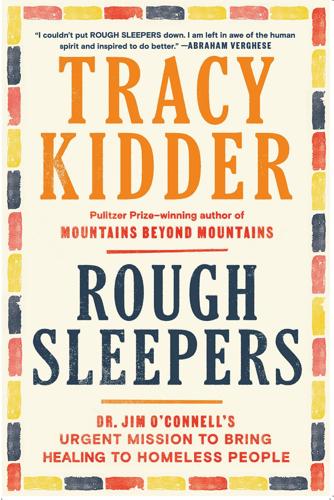
Rough Sleepers: Dr. Jim O'Connell's Urgent Mission to Bring Healing to Homeless People
by
Tracy Kidder
Published 17 Jan 2023
By Tracy Kidder Rough Sleepers A Truck Full of Money Good Prose (with Richard Todd) Strength in What Remains My Detachment Mountains Beyond Mountains Home Town Old Friends Among Schoolchildren House The Soul of a New Machine About the Author Tracy Kidder graduated from Harvard and the University of Iowa. He has won the Pulitzer Prize, the National Book Award, the Robert F. Kennedy Award, and many other literary prizes. He is the author of A Truck Full of Money, Good Prose (with Richard Todd), Strength in What Remains, My Detachment, Mountains Beyond Mountains, Home Town, Old Friends, Among Schoolchildren, House, and The Soul of a New Machine. What’s next on your reading list? Discover your next great read!
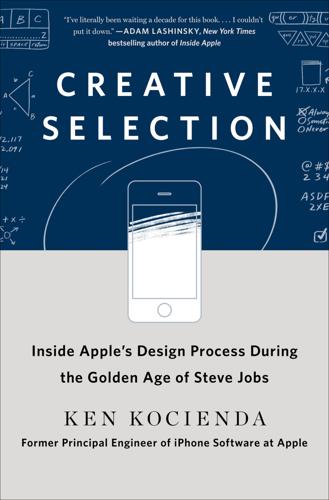
Creative Selection: Inside Apple's Design Process During the Golden Age of Steve Jobs
by
Ken Kocienda
Published 3 Sep 2018
For the sake of nostaligia, a 16mm print would be ideal, to be viewed in a darkened room, with the light of the projector revealing chalk dust in the air. Sadly, I could only find excerpts of this film on YouTube. I found the film’s introduction and portions describing the Power Sweep at https://www.youtube.com/watch?v=uv4CXySXxCk. 10. Lombardi, HBO Sports. 5. The Hardest Problem 1. Tracy Kidder, The Soul of a New Machine (New York: The Modern Library, 1997), pp. 82–83. 2. Wikipedia contributors, “White-Naped Xenopsaris,” Wikipedia, The Free Encyclopedia, https://en.wikipedia.org/w/index.php?title=White-naped_xenopsaris&oldid=833595068. Accessed November 14, 2018. I edited the original HTML source to simplify it. 6.
…
Scott was right when he suggested there weren’t that many engineers who were in the position to make WebKit editing a reality. Steve and Scott wanted this new feature. If Apple was going to deliver it, someone had to “sign up” for the work and get it done. I first encountered the term “signing up” in Tracy Kidder’s Soul of a New Machine, a Pulitzer Prize–winning book on the quest to develop a new minicomputer at Data General Corporation in the late 1970s.1 Kidder used the term to describe the moment one of the company’s young and harried engineers took on the personal responsibility for delivering a project. At Apple, we didn’t say “signing up” as formally or explicitly as Kidder tells us they did at Data General, but Kidder’s stories had seeped into high tech over the years, and many Apple people had read his book (I sure did, more than once), so we were all aware of the signing up concept, and we lived it, even if we didn’t say it.
…
See also collaboration; craft; decisiveness; diligence; empathy; inspiration; taste Fadell, Tony, 138, 162 Feynman, Richard, 187–188 Finder, 47 FIXMEs (source code annotations), 77, 80–82, 86–88, 95 form factor, 137, 160, 182 Forstall, Scott, 234–236, 249 browser development and, 54, 70, 102, 113, 114 “eff grackles” demo and, 193–196 email editing project and, 115–117, 130 iPad keyboard demo and, 16–17, 24–28, 31–36 keyboard development and, 131–136, 138–139, 171, 193–196 Kocienda’s interview with, 47–48 multitouch multitasking gestures and, 257–261 tap target game and, 226–227 text entry and, 234 Ganatra, Nitin, 180–181, 185 Gates, Bill, 48 General Public License (GPL), 40 Giggly Demo (touchscreen keyboard autocorrection), 177–180, 185–186, 189–190, 192, 214 GNOME project, 43–44, 56 GNU Project, 40–43 Google, 42, 94, 114, 117, 133–134 A/B color choice algorithm, 212–213, 218, 242 Android, 3, 42 Maps, 53n Graziano, Joseph, 105 handheld personal digital assistant, 8, 160, 189–190, 192–193, 195, 256 handwriting recognition, 8, 160, 189–190, 192–193, 256 Heisenberg, Werner, 121 heisenbugs, 121, 126, 128 Hertzfeld, Andy, 42–43 Herz, Scott, 140, 226, 236, 248–249 home screen, 225–227, 241, 258–260 SpringBoard (icon launcher program), 137, 139–141, 180, 224–225 Human Interface (HI) team, 17–18, 136, 171, 229 HyperCard, 254 Hypertext Markup Language (HTML), 49, 121–131 IBM, 58 include directive, 72–73 insertion point, 118–122, 125–130, 139, 234–235, 241–242, 247 behavioral rules (simple and complicated), 119–121 movement, 118–130, 241–242, 247 inspiration Apple Way and, 251 definition of, 3, 247 demos and, 66, 157, 218, 250 essential element of success, 3, 5, 247–248, 250 Purple project (iPhone) and, 157, 228–229 Safari project and, 84–88, 112 success ratio to perspiration, 85–87, 217, 269–70n6 Internet Relay Chat (IRC), 91 intersections algorithms and heuristics, 240–247, 251 comfort levels, 224–227 Human Interface (HI) team, 17–18, 136, 171, 229 of iPhone and effort to create it, 246–247 of iPhone and skeptics, 246 of Kocienda and Jobs, 245–246 of Kocienda’s keyboard and world, 245 mental load, 232–237 of people and commitment, 249–251 Purple-era examples, 237–245 seven essential elements of success and, 247–248 smoothness, 227–230 of technology and liberal arts, 17, 221–245 iOS 4, 257 iOS 5, 258, 261 iOS 8, 235n iOS App Store, 12 iPad, 223, 248, 257–261 K48 (internal code name), 3 keyboard demo, 7–19, 25–37, 234, 257 keyboard development, 19–25 multitouch multitasking gestures, 257–258 iPhone glass display prototype, 208–209 Macworld Conference & Expo (San Francisco, 2007), 210, 221–222, 234, 245–246, 253-254 Macworld Expo (Boston, 1997), 48 Macworld Expo (San Francisco, 2003), 102–112 Patent, 239–240, 250 Purple (product code name), 9, 135 release date (June 29, 2007), 253–254 See also keyboard design and development iPod, 2–3, 47, 49, 132n, 138, 160, 162, 187 JavaScript, 49, 80 JavaScript: The Definitive Guide, 3rd Edition (Flanagan), 48 Jobs, Steve death of, 263 decisiveness of, 5, 30–37, 248 “Design is how it works,” 187, 245 email editing project, 116–117 Gates and, 48 interview with Brian Williams, 131 Kocienda’s iPad keyboard demo to, 7–19, 25–37, 234, 257 Macworld Conference & Expo (San Francisco, 2007), 210, 221–222, 234, 245–246, 253–254 Macworld Expo (Boston, 1997), 48 Macworld Expo (San Francisco, 2003), 102–112 management style, 217 on products and users, 226 Purple project (iPhone), 137–139, 149, 199, 207, 216, 222–223 Safari project and, 48–49, 53, 91–93, 100, 218 Johnson, Steven, 84 judgment, 4, 183–184, 214, 233, 242, 244, 248 Kant, Immanuel, 182–183 KDE (programming community), 56–57, 60, 67–70, 76 keyboard design and development bigger keys layout (iPad), 21–30, 32, 36, 234 Blob keyboard prototype, 145–146 can’t miss feature, 239 derby demo winner, 149–157, 171–172 empathy and, 182–183, 185, 188–189 iPad keyboard demo, 7–19, 25–37, 234, 257 iPad keyboard development, 19–25 letter pop-ups, 175, 201 likability, 160, 185–186, 189 keyboard design and development (continued) more-keys layout (iPad), 21–30, 36, 235 patents, 239–240 pattern skew algorithm, 203–206, 234, 243–244 product-killing potential and, 160 QuickType, 235n QWERTY, 146–148, 172–189, 196–197, 199–200, 248–249 as “science project,” 8–9 single-letter QWERTY keyboard, 172–176 taste and, 182–187 thumb-typing, 8, 139–141, 144, 151, 178, 185, 189, 235 touchscreen text entry, 159–190 Keynote (app), 26, 119, 160 KHTML, 69, 71 Kidder, Tracy, 117 KJS, 69, 78–79 Knuth, Donald, 97, 100, 184 Kocienda, Ken departure from Apple, 263–264 DRI for web page editing project, 113–117 interview with Apple, 47–49 iPad keyboard demo to Jobs, 7–19, 25–37, 234, 257 promotion to Principal Engineer, iPhone Software, 19, 257 Konqueror (open source browser), 53–79, 82, 103, 248, 250 Williamson’s “crystal ball” demo of, 53–66 Lamiraux, Henri, 258, 261–262 iPad keyboard demo and, 12–13, 14–15, 24–25, 30, 32–34, 36 Purple project (iPhone) and, 132–142, 150, 152, 157, 160, 180, 192–193, 208, 211 Lesser General Public License (LGPL), 75 licenses, 43, 50–51, 74–77, 88 likability, 160, 185–186, 189 Lingo (programming language), 20 Linux (open-source operating system), 42–43, 56–58, 68, 76 X Windows (graphical system), 57 living on dogfood, 170 Lombardi, Vince, 108–112, 126, 218, 271n5, 271n8, 272n9 Mac OS X, 14, 47–48, 51–52, 57–58, 68, 75 Macintosh (original 1984 model), 42–43, 223, 228, 254, 256 MacPaint, 254 Macworld Conference & Expo (San Francisco, 2007), 210, 221–222, 234, 245–246, 253–254 Macworld Expo (Boston, 1997), 48 Macworld Expo (San Francisco, 2003), 102–112 Madden, John, 110 Mail (app), 12, 36, 47, 118, 121, 139, 141, 180, 224 Matteson, Trey, 125–130, 247 Melton, Don, 44–49 Safari project, 50–61, 67–70, 74–75, 79, 82, 85–88, 93–97, 100, 102, 211–212, 214, 250 web page editing project, 112–114, 129 mental load, 232–236 Messages (app), 12 metadata, 124, 194 Microsoft, 39–40, 246 Internet Explorer, 48–50, 91–92, 107 PowerPoint, 26, 119 Windows, 2–3, 42–43, 45, 56–57, 104 Word, 119, 121 Mozilla, 45, 51–54, 59–60, 67, 69 multitouch-aware user interface system, 138–139 multitouch technology, 136–140, 150, 228–229, 230n, 239 multitouch multitasking gestures, 257–261 Nautilus, 43–44, 46, 218 Netscape, 39, 44–46, 50, 52, 58, 75, 211–212, 267n3 Newton (handheld personal digital assistant), 8, 160, 189–190, 192–193, 195, 256 Newton, James, 269n6 NeXT, 16, 53–54, 116, 126 AppKit, 126, 138 nondisclosure agreements (NDAs), 135, 199 Notes, 28, 36, 139, 141, 206, 209, 224 Objective-C (programming language), 137 On the Origin of the Species (Darwin), 215 open source movement, 45–46, 50–51, 54, 67, 75 Konqueror, 56–61, 64–79, 82, 102, 248, 250 Mozilla, 45, 51–54, 59–60, 67, 69 optimization, software, 95–102, 184, 243, 247, 251, 270n2 Ording, Bas iPad keyboard demo, 27–36, 257 iPad keyboard development, 18–26 “more keys” layout of, 21–25, 248 Purple project (iPhone), 137, 139, 175n, 249 OS/360 mainframe operating system project (IBM), 58 Page Load Test (PLT), 93–97, 100–102, 112, 240, 247 Pages (app), 119 pattern skew algorithm, 203–206, 234, 243–244 pinch to zoom, 257 Platform Experience, 47 pop-ups, 175, 175n, 201 QWERTY keyboard, 146–148, 172–189, 196–197, 199–200, 248–249 Radar (bug tracking program), 210–211, 253 reality distortion field (RDF), 27 release dates, 211–212 Macworld Conference & Expo (San Francisco, 2007), 210, 221–222, 234, 245–246, 253–254 Macworld Expo (Boston, 1997), 48 Macworld Expo (San Francisco, 2003), 102–112 Retina display, 10 Safari project beta release, 113 Black Slab Encounter (first web page loaded), 81–82, 85–89, 93, 102, 157, 163, 180, 248 compilation, 70–74, 77–78, 88 crystal ball demo (Konqueror web), 53–66 FIXMEs (source code annotations), 77, 80–82, 86–88, 95 football analogy to technology work on, 108–112 Konqueror and, 53–79, 82, 103, 248, 250 licensing, 43, 50–51, 74–77, 88 Macworld Expo (San Francisco, 2003) announcement, 102–112 Mozilla and, 45, 51–54, 59–60, 67, 69 naming of Safari, 102–103 Netscape and, 39, 44–46, 50, 52, 58, 75, 211–212, 267n3 open source movement and, 45–46, 50–60, 64–79 optimization, 95–102 Page Load Test (PLT), 93–97, 100–101, 112, 240, 247 porting strategy, 74–79, 87–88, 103, 156 source code, 40–42, 45–46, 50–52, 54, 65–88, 94–95, 100–101 speed and, 91–102, 107–112 Williamson’s “crystal ball” Konqueror demo, 39, 53–66 Schiller, Phil, 104, 161–163, 174, 182 Seagull Manager, 217 Serlet, Bertrand, 54, 70 shim (software translation layer), 57–60 Shneiderman, Ben, 228 “signing up” for work, 117, 135, 153, 258 Singin’ in the Rain (film), 62–65 Soul of a New Machine (Kidder), 117 source code, 40–42, 45–46, 50, 72–80, 94, 100–101, 264 FIXMEs (annotations), 77, 80–82, 86–88, 95 Konqueror, 65, 67–80 Mozilla, 50–52, 54 space bar, 20, 156, 176–178, 195 SpringBoard (home screen icon launcher program), 137, 139–141, 180, 224–225 Stallman, Richard, 40–43, 45, 74–75, 79–80, 82, 85–89, 103 Star Wars (film), 223 Starr, Bart, 108–109 Story of Great Inventions, The (Burns), 83–84 super-secret project, 132–135 Swan, Joseph, 84 Switcher marketing campaign, 104 Sync Services, 132–133 synchronization, data, 132–136 System 7, 125–126 2001: A Space Odyssey (film), 82 taste Apple Way and, 251 balance, 185–187 beauty, 187–188 definition of, 4, 248 taste (continued) essential element of success, 4, 248 judgment, 4, 183–184, 214, 233, 242, 244, 248 pleasing and integrated whole, 186–189 Purple project (iPhone) and, 157, 159, 182–189, 213–214, 242, 249–250 Tevanian, Avie, 70 text entry technology, 8, 157, 159–160, 185, 192, 197, 199, 234.

Hit Refresh: The Quest to Rediscover Microsoft's Soul and Imagine a Better Future for Everyone
by
Satya Nadella
,
Greg Shaw
and
Jill Tracie Nichols
Published 25 Sep 2017
If there was any one theme I wanted to emphasize that day, it was that we must discover what would be lost in the world if Microsoft just disappeared. We had to answer for ourselves, what is the company about? Why do we exist? I told them it was time for us to rediscover our soul—what makes us unique. One of my favorite books is Tracy Kidder’s The Soul of a New Machine about another tech company, Data General, in the 1970s. In it, Kidder teaches us that technology is nothing more than the collective soul of those who build it. The technology is fascinating, but even more fascinating is the profound obsession of its designers. And so what is soul in this context of a company?
…
See also mobile phones; and specific products Smith, Brad, 3, 131, 170–71, 173, 189 SMS, 216 Snapchat, 193 Snapdeal, 33 Snow Crash (Stephenson), 143 Snowden, Edward, 172–73, 179–80 Social Connector, 137 social contract, 239 socioeconomic change, 12–13 software design, 27, 49 software engineering, 74 solar, wind, and tidal power, 43, 228 Sony, 28 Sony Pictures Entertainment, 169–70, 177, 179, 189 Soul of a New Machine, The (Kidder), 68 South Zone, 37, 115 sovereignty, 170 space exploration, 145–46 Spain, 215 spam filters, 158 speech recognition, 76, 89, 142, 150–51, 164 Spencer, Phil, 106–7 sports franchises, 15 spreadsheets, 143 SQL (structured query language), 26 SQL Server, 53, 55 Stallone, Sylvester, 44 Stanford University, 64 One Hundred Year Study, 208 Start-up of You, The (Hoffman), 233 Station Q, 162–63, 166 Stephenson, Neal, 143 string theory, 164 Studio D, 65–66 success leadership, 120 Sun Microsystems, 26–29, 54 Super Bowl, 4 supercomputers, 161 superconducting, 162–65 supply-chain operations, 103 Surface, 2, 129 Surface Hub, 89, 137 Surface Pro 3, 85 Surface Studio, 137 Svore, Krysta, 164–65 Sway, 121 Sweden, 44 Swisher, Kara, 138 Sydney Opera House, 98 symbiotic intelligence, 204 Synopsys, 25 Syria, 218 tablets, 45, 85, 134, 141.
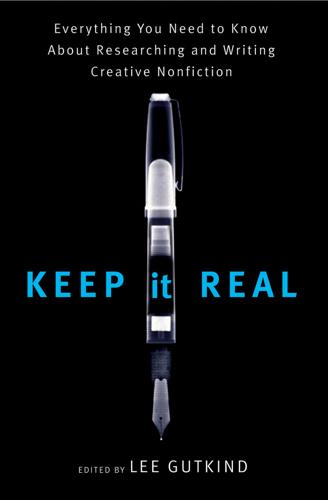
Keep It Real: Everything You Need to Know About Researching and Writing Creative Nonfiction
by
Lee Gutkind
Published 1 Jan 2008
Plimpton, for example, spent a season in training camp with the Detroit Lions. Some writers spend years researching their subjects in this painstaking way. But the intimate details and thorough understanding that result make immersion worth the effort. “I believe in immersion in the events of a story,” writes Tracy Kidder, the Pulitzer Prize-winning author of The Soul of a New Machine, House, Home Town, and many other books. “I take it on faith that the truth lies in the events somewhere and that immersion in those real events will yield glimpses of that truth.” Successful immersion often demands that the writer’s presence be as unobtrusive as possible, and some writers go to great lengths to blend in.

Masters of Management: How the Business Gurus and Their Ideas Have Changed the World—for Better and for Worse
by
Adrian Wooldridge
Published 29 Nov 2011
Traditional planning departments were preoccupied with engineering a tight fit between goals and resources; Hamel and Prahalad argued that strategy is about using a vision of the future to inspire workers to go that little bit further. This sort of ambition is most common in startups. (Tracy Kidder’s gripping account of Data General, The Soul of a New Machine, shows how managers can happily impose eighty-hour workweeks and impossible deadlines if they can inspire their workers with a vision of greatness.) But big firms have also pulled off the same trick, especially in Japan. Toshiba told its employees to design a new VCR using half the number of parts and taking half the time at half the cost.
…
See also Capitalism Sloan Management Review, 52 Sloan School of Management, 58 Slogans, 273 Smart Is Not Enough! (Guarino), 365 Smith, Adam, 22, 77, 270 Smith, Fred, 197 Smith, Roger, 260 Snakes on a Plane, 157 SNCF, 304 Social contract, 358–359 Social networks, 359 Social responsibility, 38 Soifer, Ray, 11 Soifer Consulting, 11 Soros, George, 57 The Soul of a New Machine (Kidder), 259 Southwest Airlines, 172 Sovereignty at Bay (Vernon), 272 S&P 500, 366 Stalk, George, 111 Stanford Business School, 61 Starbucks, 38 Steiner, George, 253, 267 Stephenson, Howard, 194 Stewart, Matthew, xiii, 14, 15–16, 59 Stone, Bob, 319 Stonecipher, Harry, 298 Strategic Planning (Steiner), 253 Strategy & Business, 64 Strengths Based Leadership (Rath and Conchie), 64 Strengths Finder 2.0 (Rath), 64 Sull, Donald, 71 Sulzberger, Arthur, 114 Summers, Larry, 126, 133 Sun Microsystems, 240 Sunstein, Cass, 331 Supercapitalism (Reich), 127–128 Sykes, Richard, 236–237 Syriana, 118 Taiwan Semiconductor Manufacturing Company, 159 Taleb, Nassim, 67, 149–150 Taobao, 184 Tapscott, Don, 67, 240, 242, 243, 326–327 Tata, Ratan, 239, 285–286, 289 Tata Chemicals, 209 Tata Communications, 286 Tata Consultancy Services (TCS), 208–209, 210–211, 218, 221–222, 226, 227, 285 Tata Global Beverages, 285 Tata Group, 288, 415–416 Tata Motors, 239, 286 Tata Sons, 287 Tata Steel, 46, 166, 285 Tavistock Institute, 80 Taxes, 178 progressive, 390 Taylor, Frederick Winslow, 3–4, 68, 77–79, 235, 252 TCHO, 241 TCS.
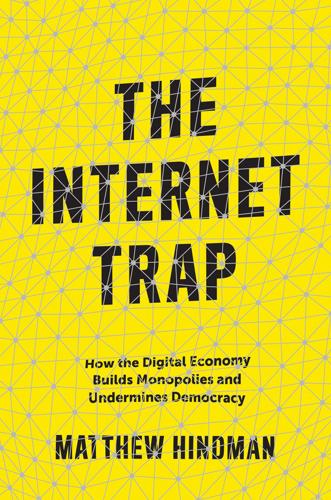
The Internet Trap: How the Digital Economy Builds Monopolies and Undermines Democracy
by
Matthew Hindman
Published 24 Sep 2018
Yet these models do have limits: by speeding up the time scale, this chapter has skipped over important details of how digital audiences evolve over time. The day-to-day dynamics of audience growth will be the subject of the next chapter. 5 The Dynamics of Web Traffic With Bruce Rogers [A] small company had to court disaster. It had to grow like a weed just to survive. —Tracy Kidder, The Soul of a New Machine, 1981 Somewhere around 1790, New York City grew to 32,000 inhabitants, and passed Philadelphia as the largest city in North America. New York’s early emergence as America’s metropolis was driven by both new technology and natural advantage.1 While shipping in the 1700s had mostly followed a point-to-point pattern, larger ships and speedier passage across the Atlantic meant a shift to a hub-and-spoke model with New York as the cheapest shipping hub.
…
Seattle Times, 159, 190 security, 2, 42, 164, 175–78 server farms, 4, 15, 20, 28–29, 167 Shapiro, Carl, 30 Shaw, Aaron, 170 Sherman Antitrust Act, 175 shipping, 63, 66, 79, 81–82 Shirky, Clay, 12, 165–66 Shoenfeld, Zach, 145 Shop Direct, 26 Sifry, Micah, 7 Silicon Valley, 35, 84 Simon, Herbert, 4 238 • Index Sinclair Broadcasting, 131 singular value decomposition (SVD), 45, 58–59 skill-based habits of use, 34–35 slideshows, 108, 151, 160–61 smartphones, 2, 142–44, 165 Snowden, Edward, 176 Social Reader, 151 software: attention economy and, 2, 4; economic geography and, 65–66; nature of internet and, 164, 167, 176; news and, 105, 107, 110, 143, 155; personalization and, 54; tilted playing field and, 20–23, 26, 33–34, 36; traffic and, 87 Sotheby’s, 42 Soul of a New Machine, The (Kidder), 82 Spanner, 21, 23 speed: attention economy and, 1–2, 21–25, 30, 54, 81–82, 147–48, 166–67, 170, 190, 193n1, 193n2; Google and, 1–2, 21–25, 80, 144, 147, 176; Microsoft and, 24; news and, 146–47; performance dashboards and, 24; profit and, 198n41; stickiness and, 2, 146; traffic and, 1–2, 21–25, 30, 54, 81–82, 146–48, 152, 166–67, 170, 190 statistics: audience reach and, 68, 93, 106, 109, 111, 134, 159, 189; Box aphorism and, 64; Google and, 27, 68; linear models and, 44; Netflix Prize and, 44, 46–47; news and, 106, 109, 111, 115, 122–23, 127–28, 134, 155, 159, 187, 189; smaller sites and, 27; traffic and, 93, 106, 109, 111, 115, 122–23, 127–28, 134 Stecula, Dominik, 169 stickiness: architectural vs. economic power and, 171; attention economy and, 2, 11, 13; cooperation and, 158–59; costs and, 154–58; digital audience dynamics and, 135–37, 146–52; economic geography and, 74; economies of scale and, 16; false solutions and, 137–46; faster load times and, 146; favorable website traits and, 166; Google and, 2, 24, 156, 167, 171; government subsidies and, 133, 137, 140–42; infrastructure and, 13, 23, 152–54; journalism and, 132–37, 140–48, 152, 154, 157, 159–61; mobile devices and, 2–4, 13, 39, 69, 109, 137, 142–44, 147, 152, 160, 165, 167, 170, 179; myth of monetization and, 134–35, 140, 145; nature of internet and, 167, 170–71, 176, 180; networks and, 18; newspapers and, 11, 133, 135–36, 139–41, 146–49, 152–60, 167, 180; nonprofit journalism and, 118, 133, 137, 140–42, 146, 160; open web and, 140; paywalls and, 132, 137–40, 147, 160; personalization and, 48, 53; philanthropy and, 133, 137, 140–42; pivot to video and, 144–46, 202n31; recommendation systems and, 48–49; search results speed and, 2; tilted playing field and, 16, 18, 23, 36; traffic and, 2, 101 Stigler, George, 41–42 Stillwell, David, 59 stochastic dynamical systems (SDS), 85, 185 stock market, 9, 85–88, 92, 95, 100, 185, 199n15 storage, 21–23, 26, 34, 36 Stroud, Natalie, 32 StumbleUpon, 26 subscriptions: attention economy and, 4; economic geography and, 65, 67; methodology on, 181, 187, 190; news and, 138–39, 146–47, 151, 153, 157, 201n8; political economy and, 43–44, 48, 52, 54; revenue and, 4, 17, 43–44, 48, 52, 54, 65, 67, 138–39, 146–47, 151, 153, 157, 181, 187, 190, 201n8; tilted playing field and, 17 Sullivan, Andrew, 70 surveillance, 176–77 Sweet, Diana, 169 switching costs, 8, 34, 63, 72, 78–79, 164 tablets, 3, 39, 137, 142–44, 152, 165 telegraph, 12, 36, 174 telephones, 16–17, 132, 174 television: advertising and, 68; attention economy and, 11–12; cable, 12; economic geography and, 66, 70; innovation and, 12; methodology and, 187–88, 190–91; news and, 11, 104, 107, 110–14, 114, 121–31, 134–35; personalization and, 38, 42; regression analysis and, 190–92; satellite, 12 Tenenboim, Ori, 130 TensorFlow, 21 Tenzig, 27 Texas Tribune, 140 Thomas, Kristin Yates, 31 Thrall, Trevor, 169 threshold effects, 30, 88, 104, 114–15, 119–22, 129, 186–91 Index Thurman, Neil, 39 tilted playing field: advertising and, 15, 17, 25, 28–36, 30; Amazon and, 20, 22, 26, 28; Apple and, 15; apps and, 16, 18, 26, 28; architectural advantages and, 19–25; Bing and, 24, 28, 30–32; blogs and, 17, 25, 35; branding and, 28–32, 36, 86, 166; competition and, 16–17, 21–22, 26–37; concentration and, 19, 30, 32; consumption and, 22–23, 26, 29–34, 37; design advantages and, 25–28; economies of scale and, 7–8, 16–20, 24–25, 37; efficiency and, 20–23, 26, 37; email and, 34–35; experiments and, 24–26, 28, 31–32; Facebook and, 15–23, 26, 35–37; filters and, 19; Google and, 15–16, 18, 20–32, 36–37, 194n24, 195n63; investment and, 15, 19–23, 28–29, 33; journalism and, 35; lock-in and, 34–37, 61, 101, 173; markets and, 20, 24, 28–37; Microsoft and, 15, 20, 22, 24, 26–33, 195n63; models and, 22, 25; Netflix and, 26; networks and, 16–23, 28, 35–37, 193n5; news and, 18–19, 26–36; path dependence and, 35–37; personalization and, 23; quality and, 26, 30–33, 36; rankings and, 25, 31; revenue and, 20, 24, 26, 28–29, 31, 194n39; search engines and, 17, 24, 30–32; software and, 20–23, 26, 33–34, 36; stickiness and, 16, 18, 23, 36; subscriptions and, 17; traffic and, 19–32, 36–37, 194n39; user learning and, 33–34; video and, 22, 24; Yahoo!
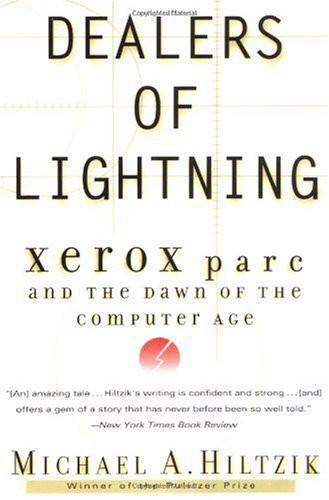
Dealers of Lightning
by
Michael A. Hiltzik
Published 27 Apr 2000
Alan Turing: The Enigma. New York: Simon & Schuster, 1983. Jackson, Tim. Inside Intel. New York: Dutton, 1997. Jacobson, Gary, and John Hillkirk. Xerox: American Samurai. New York: Macmillan, 1986. Kearns, David T., and David A. Nadler. Prophets in the Dark. New York: HarperBusiness, 1992. Kidder, Tracy. The Soul of a New Machine. Boston: Little, Brown, 1981. Lammers, Susan. Programmers at Work. Redmond, Wash.: Microsoft Press, 1986. Levy, Steven. Insanely Great. New York: Viking, 1994. Malone, Michael S. The Big Score: The Billion-Dollar Story of Silicon Valley. Garden City, N.Y.: Doubleday & Co., 1985. Manes, Stephen, and Paul Andrews, Gates.
…
Praise DEALERS OF LIGHTNING Xerox PARC and the Dawn of the Computer Age Michael Hiltzik From a Pulitzer Prize-winning journalist comes this riveting, true story of an extraordinary group of inventors who brought about a technological revolution that would change the world. In the bestselling tradition of The Soul Of A New Machine and Accidental Empires, Dealers of Lightning is a fascinating journey of intellectual creation. In the 1970s and ’80s, Xerox Corporation brought together a braintrust of engineering geniuses, a group of computer eccentrics dubbed PARC. This brilliant group would create several monumental innovations including the first personal computer, the laser printer, and the graphical interface (one of the main precursors to the Internet) only to see these breakthroughs rejected by the corporation.
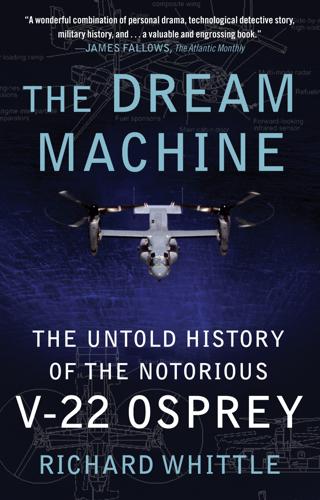
The Dream Machine: The Untold History of the Notorious V-22 Osprey
by
Richard Whittle
Published 26 Apr 2010
PRAISE FOR RICHARD WHITTLE AND THE DREAM MACHINE “[A] book that takes off like a novel and flies like a well-sourced historical investigation.” —Gretel C. Kovach, The San Diego Union-Tribune “Whittle skillfully depicts the evolution of the aircraft from drawing board to reality. A military version of Tracy Kidder’s The Soul of a New Machine.” —Kirkus Reviews “It’s a great yarn for those in love with military gee-whiz technology and aviation.” —Mark Thompson, Washington Monthly “By recounting the story of the Marine Corps’ … devotion to the Osprey through years of catastrophic mishaps, budgetary obstacles, and political hoops—not to mention lost lives—Whittle has told the most instructive tale of the way things are done in Washington in some time.
…
—Mark Shields, syndicated columnist and PBS Newshour political analyst “The Dream Machine is the gripping story of the quest for the Osprey, an ideal flying machine that transfixed the aviation world and eventually cost billions of dollars and dozens of lives. Like the helicopter-airplane that tantalized generals, engineers, and pilots for decades, The Dream Machine is also an irresistible hybrid—a cross between The Soul of a New Machine and Black Hawk Down.” —Brad Matsen, former aviator and New York Times bestselling author of Titanic’s Last Secrets and Jacques Cousteau: The Sea King “Meticulously researched and tautly written, Richard Whittle’s The Dream Machine expertly weaves telling technical details with heart-stopping human drama into a riveting, fast-paced history of one of the military’s most controversial war machines, the V-22 Osprey.”
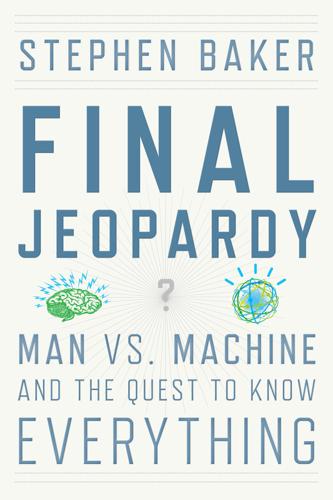
Final Jeopardy: Man vs. Machine and the Quest to Know Everything
by
Stephen Baker
Published 17 Feb 2011
, Crown Publishers, 2006 Hawkins, Jeff, with Sandra Blakeslee, On Intelligence, Henry Holt and Co., 2004 Hsu, Feng-Hsiung, Behind Deep Blue: Building the Computer that Defeated the World Chess Champion, Princeton University Press, 2002 Jennings, Ken, Brainiac: Adventures in the Curious, Competitive, Compulsive World of Trivia Buffs, Villard Books, 2006 Johnson, Steven, Mind Wide Open: Your Brain and the Neuroscience of Everyday Life, Scribner, 2004 Kidder, Tracy, The Soul of a New Machine, Little, Brown and Co., 1981 Klingberg, Torel, The Overflowing Brain: Information Overload and the Limits of Working Memory, Oxford University Press, 2009 Lanier, Jaron, You Are Not a Gadget: A Manifesto, Alfred A. Knopf, 2010 Ma, Jeffrey, The House Advantage: Playing the Odds to Win Big in Business, Palgrave MacMillan, 2010 McNeely, Ian F., with Lisa Wolverton, Reinventing Knowledge: From Alexandria to the Internet, W.

Blockchain Revolution: How the Technology Behind Bitcoin Is Changing Money, Business, and the World
by
Don Tapscott
and
Alex Tapscott
Published 9 May 2016
In the 1950s and 1960s, mainframes ruled—International Business Machines and the Wild “BUNCH” (Burroughs, Univac, National Cash Register Corp., Control Data, and Honeywell). In the 1970s and 1980s, minicomputers exploded onto the scene. Tracy Kidder captured the rise of Data General in his 1981 best seller The Soul of a New Machine. Like mainframe companies, most of these firms exited the business or disappeared. Who remembers Digital Equipment Corporation, Prime Computer, Wang, Datapoint, or the minicomputers of Hewlett-Packard or IBM? In 1982, IBM hardware and Microsoft software brought us the decade of the PC, with Apple’s Macintosh barely nipping at their heels.
…
See Design principles ShapeShift, 260 Shapiro, Melanie, 287 Shareholders, 11, 78–79, 100, 107, 125–28 Sharing economy, 17–18, 134–35, 187 Sidechains, 60 Silbert, Barry, 86, 284 Silk Road, 9, 276 Simplified payment verification (SPV), 50 Simpson, Arianna, 287 Skogstad, Anselm, 240 Skynet, 273 Slack, 89 Smart contracts, 101–3, 109, 126, 142, 219 aid groups and, 190 DApps, 120, 121 definition of, 101–2 MFIs and, 192 multisig authentication, 103–5 ownership rights and, 46–48 for political reputations, 210–11 Smart devices, 150–54 economic payoffs, 161–64 future developments, 164–67 hacking your future, 168–69 twelve disruptions, 156–61 Smart homes, 161, 275 Smart locks, 117 Smart pills, 151, 158 Smartwallet, 83, 131, 153 Snow Crash (Stephenson), 38, 315n Snowden, Edward, 243 Social contracts, 99 Social energy, 148–50 Social production, 129–32 Social Security, 80, 176 Societal change, 257–58 Society for Worldwide Interbank Financial Telecommunication (SWIFT), 42, 59, 262 Society of European Stage Authors and Composers (SESAC), 229 Song, Dawn, 288 Sony Music Entertainment, 229, 230 Soul of a New Machine, The (Kidder), 150 Spain, Agora Voting, 218–19 Spam, 34, 39, 255, 321n Spotify, 88, 229, 230, 239, 319n Srinivasan, Balaji, 178–79 Stakeholders, 262 Standards networks, 304–6 Stark, Elizabeth, 288 Steiner, Peter, 3 Stellar, 32, 37, 170–71 Stellar Development Foundation, 170–71 Stephenson, Neal, 315 Stiglitz, Joseph, 35–36, 57, 107 Storing value, in financial services, 61–62, 64 Storj, 95, 120 Streaming music, 229, 230 Streaming open and trusted data, 208–9 Streamium, 233 Student debt, 248–49 SUber, 165–67 Subledger, 73–74 Surveillance, 25, 42, 44–45, 212, 243–44, 274–75 Swan, Melanie, 110, 204, 224, 247–49 Sybil attacks, 36, 37, 315n Systemic risk, 59 Szabo, Nick, 4–5, 37, 101–2, 255 Talking Heads, 227, 228 “Taps,” 146–47 Tapscott, Bob, 261, 268 Taylor, Simon, 75 TCP/IP (Transmission Control Protocol/Internet Protocol), 43, 50 Technology democracy and, 212–14 as implementation challenge, 254–58 Termen, Lev Sergeyevich, 253–54, 277 Terms of third-party engagement, 234 Tezos, 95 Theory of the firm, 92–93, 100, 105–6, 121, 319n Theremin, 253–54 Thiel, Peter, 93–94 360-degree deals, 229 Ticoll, David, 25, 109, 134 Tinsley, Michelle, 155 Title registration, 8, 19–20, 51, 188–89, 193–95, 198 Todd, Peter, 133, 268 Tools of abundance, 178–79 Top-down management, 89, 92, 106 Tor, 263 Torvalds, Linus, 88, 282 Totalitarianism, 34, 52, 141, 145 TradeNet, 165 Trading volume, 256 Transactional capacity, 255 Transaction costs, 92–93, 95–101, 107, 142, 193, 269 Transparency, 10, 11, 298 aid groups and, 190–91 design principles and, 30, 39, 41, 44, 45 financial services and, 66–67, 77 government and political institutions, 205, 210, 296 MFIs and, 192 music and, 232–33, 236 Transportation, 137, 156–57, 164–67, 206 Treat, David, 70 Triple-entry accounting, 77, 78–79, 180 Trump, Donald, 210 Trust achieving in the digital age, 10–11 costs of (re-)building, 107–9, 143 networked integrity, 30–33 in political institutions, 201–2 Trust Barometer, 10 Trusted data, 208–9 Trusted systems.
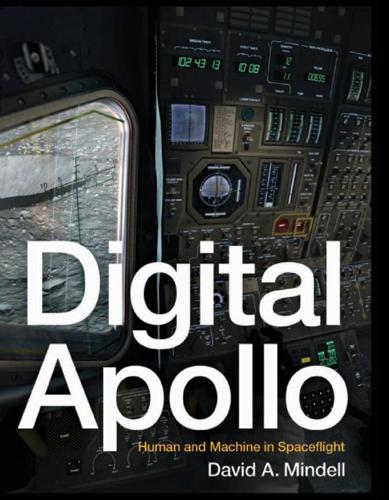
Digital Apollo: Human and Machine in Spaceflight
by
David A. Mindell
Published 3 Apr 2008
One of my goals is to explain, really explain, how Apollo worked, and to make one of the most difficult engineering accomplishments of the twentieth century accessible and understandable. The story combines the intrigue and suspense of a group of engineers working at the cutting edge of technology with the drama and interest of spaceflight and the social importance of computers. Tracy Kidder’s 1981 book about a group of engineers building a computer, The Soul of a New Machine, had the ironic result that the computer he focused on, a minor commercial machine, was forgotten, while his book is long remembered. This story has a similar cast of characters but in this case the computer and its task made history. I hope that the interested, nontechnical reader will gain from this story insight and intuition into the thorny and fascinating engineering problem of how to fly to the moon, particularly how to land on its surface, and some understanding of the funda- Human and Machine in the Race to the Moon 15 mental questions of machine control and human-machine interaction.
…
O., 35 Schirra, Wally, 82, 84–85, 177 Robots, 271 connotation of word, 22 Schmidt, Harrison ‘‘Jack,’’ 256–257 Schmidt, Stanley, 103 human factors and, 8, 15–16 Schweikart, Rusty, 185–186 354 Scientist-astronauts, 256–257 Scott, David, 257, 260 Index black boxes and, 54 computers and, 148 airmen school and, 85, 87 Eagle and, 222, 227–228 Apollo 15 and, 251–255 feel of, 53 automation and, 258–259 free flying, 210–213 computers and, 140, 165, 169, 235 gain and, 51, 54 education of, 256 hybrid, 148 landing design and, 213 Johnsville tests and, 70–73 lunar module (LM) and, 186 Seamans, Robert, 75, 97, 107, 169 landings and, 210–213 limitations of, 53–54 Sea of Tranquility, 251 lunar module (LM) and, 186, 208–213 Sense amplifiers, 126 mission, 208–209 Sequencers, 149–150 pilot-in-the-loop, 192 Service propulsion system (SPS) engines, 175, pitch over and, 251–255 177 Shea, Joe, 263–264 airmen school and, 37, 66 astronaut deaths and, 173 pucker factor and, 211 software and, 148 X-15 and, 51–54 Skill, 22–24 background of, 134 adaptive control system and, 57–61 digital autopilot and, 139–142 Apollo 14 and, 248–249 guidance systems and, 120 Mercury and, 81–82 Klumpp and, 188 new technologies and, 267–268 Space Task Group and, 135–136 scientist-astronauts and, 256–257 systems approach of, 133–136 stability augmentation system (SAS) and, 55– Shepard, Alan, 7, 260 airmen school and, 65, 81 57 vision and, 258–261 Apollo 14 and, 243–249 Skunk Works, 45–63, 46 computers and, 137, 160 Skywalker, Luke, 15 guidance systems and, 96, 121 Slayton, Deke, 257 personality of, 243 airmen school and, 79, 82, 86 Sheridan, Tom, 161 guidance systems and, 121 Sherman, Howard, 183 Society of Experimental Test Pilots (SETP) Shoemaker, Eugene, 257 Siddiqi, Asif, 9–10 and, 80 teleprinter and, 108–109 Sikorsky S-29, 10 Slide rules, 10, 24, 87, 165, 181 Silver, George, 227–228 Smithsonian Air and Space Museum, 63 Simulators, 2–3, 32, 168, 175 Snark missile, 18 adaptive control system and, 57–58 anxiety and, 54 Society of Experimental Test Pilots (SETP), 17– 19, 24, 30 Apollo 11 and, 217, 220 Armstrong and, 224, 226 Apollo 12 and, 238 Apollo 15 and, 250 black boxes and, 35 Grissom and, 83–84 Apollo 16 and, 213–215, 255 Johnsville tests and, 72–73 Index 355 Mercury Seven and, 74 safety and, 31 pilots and, 161–165 Program Alarm and, 3, 8, 228–230 spaceflight and, 39, 41 project management and, 169–174 von Braun and, 66–70, 79–80 punch cards and, 152 Software, 10, 127, 129–130, 143 reentry and, 160 Apollo 8 and, 177–179 reliability and, 145 Apollo 14 and, 243–249 rise of, 179–180 astronaut input and, 158–160 simulators and, 148 asynchronous executive, 149–151 attitude indicator and, 159 as systems integrator, 149–151 Tindallgrams and, 170–171 automation and, 158–160 (see also use of term, 145–146 Automation) user errors and, 160 Basic language and, 149 SOLARIUM, 151 Battin and, 145–146, 151, 158 Soul of a New Machine, The (Kidder), 14 budget for, 146 Soulé, Hartley, 27 bugs and, 150, 171–172, 175–176, 232–233 Sound barrier, 44 building programs and, 151–154 command module and, 146 South Ray Crater, 255 Soviet Union, 5 early missions and, 174–177 automation and, 88–90, 93–94 embedded constraints and, 159–160 Gagarin and, 89, 95–96 Executive, 149 jamming by, 104, 138 firmware and, 154–157 Khrushchev and, 102 G&N System Panel and, 148–149, 160 Soyuz and, 90 ‘‘go to moon’’ interface and, 160–161 Sputnik and, 6, 12, 19, 49, 99 guidance systems and, 145–146, 151–154, 158–165 Stalin and, 89 Vostok and, 13 hacker culture and, 148, 152, 246 Soyuz, 90 as hardware, 154 Spaceflight human role and, 149, 160–166, 232–233 Interpreter, 149 Apollo program and, 14–15 (see also Apollo program) landings and, 191, 193, 195–196 centrifuge tests and, 70–72 Laning and, 151 Dyna-Soar program and, 68, 70–73 lunar module and, 146 MAC project and, 148 first rendezvous in space and, 84–85 future of, 15–16, 263–271 management issues and, 169–174 Gemini program and, 83–88 (see also Gemini manufacturing code for, 154–157 program) masculinity and, 146 ground control and, 97 mathematics and, 147, 149 Johnsville tests and, 70–73 memory issues and, 171–172 Kennedy and, 95–96 navigation and, 147 Mars probes and, 99–102 operating systems and, 149–150 original work statement and, 146 Mercury program and, 73–83 (see also Mercury program) P40 program and, 150 orbital transfers and, 101–102 356 Spaceflight (cont.) piloted boosts and, 80, 93–94 Index supersonic flight and, 32–36, 44–45 Surveyor III and, 236 Project Mercury and, 73–83 systems age and, 36–38 psychologists and, 81 test pilots and, 29–32 rendezvous and, 84–88, 111–112 Wright brothers and, 22–23 Space Task Group (STG) and, 74–77 Stability and Control group (Langley), 27–28 staging and, 72 Stability augmentation system (SAS), 55–57, Space sextant Apollo and, 104, 109–110, 114–119 optical issues and, 114–119 Space shuttles, 16 60 Stafford, Thomas, 84–85 Stalinism, 89 Star line, 114 Columbia, 49, 217–218, 264–265 Star Wars (film), 15 Dyna-Soar and, 68 State vector, 102–103 Faget and, 75 Statistical failure analysis, 131–132 mach number and, 49 Steam drill, 5 wings and wheels, 264–266 Stewart, Jimmy, 62 Space Task Group (STG) airmen school and, 74–77, 88 Stick-and-rudder skills, 24 Stick control Apollo computer and, 134 Eagle and, 221 guidance systems and, 103 fly-by-wire and, 79, 81 lunar module (LM) and, 186–187 landing point designator and, 204–206 Space walks, 83, 86, 101, 181, 240–241, 268 Mercury and, 79 Special Projects Office (SPO), 37, 98 three-axis, 79 Sperry-Draper Mark 14 Sight, 97 X-15 and, 79 Sperry Gyroscope Company, 25–26, 43, 96– 97, 127 Stick force per g, 27 Stone Mountain, 255 Spirit of St.
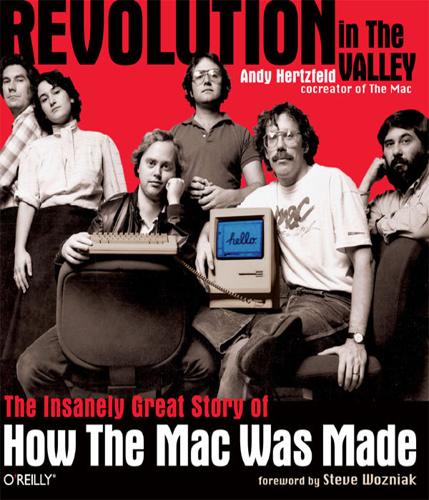
Revolution in the Valley: The Insanely Great Story of How the Mac Was Made
by
Andy Hertzfeld
Published 19 Nov 2011
Apparently, Mike wanted to write a book about Apple and managed to convince Steve to give him total access to the company, including the Macintosh team. “Mike’s going to be our historian,” Steve informed us, “so you can tell him everything. Treat him like he’s a member of the team because he’s going to write our story for us.” The previous year, a development team at Data General was immortalized by Tracy Kidder’s best-selling book, The Soul of a New Machine, about the ups and downs of developing a new minicomputer. Now it seemed that Mike Moritz was going to do something similar for the Mac team. Mike Moritz, Apple historian Over the next few months, Mike spent lots of time hanging around the Mac team, attending various meetings and conducting interviews over lunch or dinner, to learn our individual stories.
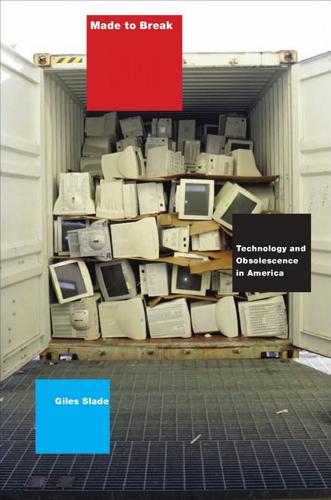
Made to Break: Technology and Obsolescence in America
by
Giles Slade
Published 14 Apr 2006
Glasmeier, Manufacturing Time: Global Competition and the Watch Industry, 1795–2000 (New York: Guildford Press, 2000), pp. 203–241. 25. Ceruzzi, History of Modern Computing, p. 213. 26. Petroski, To Engineer Is Human, p. 192. 27. Victor J.Papanek,The Green Imperative (New York: Thames and Hudson, 1995), p. 175. 28. Tracy Kidder, The Soul of a New Machine (Boston: Little, Brown, 1981), p. 59. Petroski, To Engineer Is Human, p. 192. 29. Ceruzzi,History of Modern Computing, p. 215.Martin,The Wired Society, p. 15. 30. Andrea Butter and David Pogue, Piloting Palm: The Inside Story of Palm, Handspring, and the Birth of the Billion Dollar Handheld Industry (New York: John Wiley, 2002), p. 305. 31.
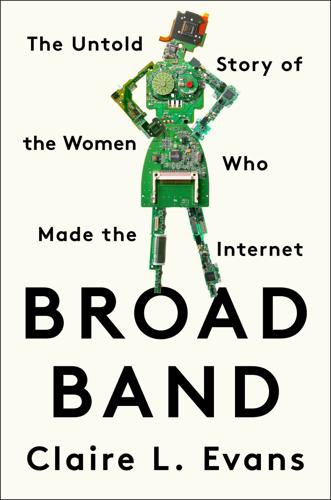
Broad Band: The Untold Story of the Women Who Made the Internet
by
Claire L. Evans
Published 6 Mar 2018
“pulled apart in various ways”: Julian Dibbell, “A Marketable Wonder: Spelunking the American Imagination,” Topic Magazine 2, www.webdelsol.com/Topic/articles/02/dibbell.html. “software is the final victory”: Richard Powers, Plowing the Dark (New York: Picador, 2001), 307. “Another caver who was with”: Jerz, “Somewhere Nearby Is Colossal Cave.” “harrowing of Hell”: Tracy Kidder, The Soul of a New Machine (New York: Back Bay Books, 1981), 88. By the time she encountered: www.legacy.com/obituaries/dispatch/obituary.aspx?n=john-preston-wilcox&pid=145049233. “completely different from the real cave”: Jerz, “Somewhere Nearby Is Colossal Cave.” “Adventure’s Colossal Cave, at least”: Walt Bilofsky, “Adventures in Computing,” Profiles: The Magazine for Kaypro Users 2, no. 1 (1984): 25, https://archive.org/stream/PROFILES_Volume_2_Number_1_1984-07_Kaypro_Corp_US/PROFILES_Volume_2_Number_1_1984-07_Kaypro_Corp_US_djvu.txt.

Animal Spirits: The American Pursuit of Vitality From Camp Meeting to Wall Street
by
Jackson Lears
The rhetoric of vitalism flourished amid countercultural ferment. Soon enough the ferment would subside and what was left of countercultural protest would be absorbed into the newer, hipper technocracy pioneered in Stewart Brand’s Whole Earth Catalog and brought to fulfillment in Silicon Valley. Tracy Kidder’s The Soul of a New Machine (1980) signaled a new sort of technophilic mysticism, well suited to the mass distribution of personal computers. Hip capitalist advertisers helped to channel countercultural impulses toward the creation of “alternative lifestyles” through the assemblage of consumer goods—including expensive gear that could make the purchaser feel and look like an outdoorsman even if he spent sixteen hours a day staring at a screen.
…
Skidelsky, Robert Skinner, Michael slavery; opposition to Sleeping Beauty (Tchaikovsky) Sloan, Alfred Slosson, Edwin Smith, Adam Smith, Horace Smith, Mamie Social Darwinism socialism Social Security Society for Psychical Research “Song of Myself” (Whitman) Songs of Jamaica (McKay) Sorel, Georges Soul of a New Machine, The (Kidder) Souls of Black Folks (Du Bois) South Sea Bubble Soviet Union, see Russia Spain specie; banknotes vs. speculative capitalism, see capitalism; stock market Spencer, Archibald spirit, as term Spiritualism Spivak, Gayatri sports; speculation as starvation statistics; God found in; Keynes on; probability theory and; public policy and, see technocratic rationality; see also quantitative thinking Steffens, Lincoln Stein, Gertrude Sterne, Laurence Stevenson, Robert Louis Stewart, Dugald Stimson, Henry stock market; animal spirits in; attempts to quantify; bonds and; confidence and; condemnation of; credit and; gambling and; manipulation of; regulation of; tickers for; see also boom and bust cycles; capitalism Stone, I.

Where Wizards Stay Up Late: The Origins of the Internet
by
Katie Hafner
and
Matthew Lyon
Published 1 Jan 1996
“The United States Postal Service: Will It Be Ready for the Year 2000?” In The Future of the Postal Service. Edited by Joel L. Fleishman. New York: Praeger, 1983. Holzmann, Gerard J., and Björn Pehrson. The Early History of Data Network. Los Alamitos, Calif.: IEEE Computer Society Press, 1995. Kidder, Tracy. The Soul of a New Machine. Boston: Little, Brown, 1981. Killian, James R., Jr. Sputnik, Scientists, and Eisenhower: A Memoir of the First Special Assistant to the President for Science and Technology. Cambridge: MIT Press, 1977. ———. The Education of a College President: A Memoir. Cambridge: MIT Press, 1985. Kleinrock, Leonard.
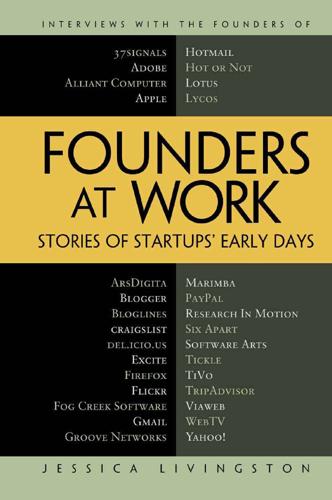
Founders at Work: Stories of Startups' Early Days
by
Jessica Livingston
Published 14 Aug 2008
Data General was a very entrepreneurial—almost Darwinian—kind of environment. Ed de Castro and the other founders would try hard to hire the best, most aggressive people they could find, and then let those people go off and oftentimes compete on their own. 427 428 Founders at Work The book The Soul of a New Machine characterizes that environment fairly well. It talks about two competing teams—the Eagle Team and the Fountainhead Team—how they competed internally, and how the Eagle Team eventually won out because they got to market sooner. I was the head of the Fountainhead project. Spending 13 years there was a really good background for me to understand a truly entrepreneurial kind of environment.
…
Flickr, 260 Software Arts, 73–88, 92, software distribution, 155 software industry, 307 software package, 9 software patents, 178 software products, 315 software startups, 307 software toolkit, 319 software vs. hardware designers, 21 Sogge, Dick, 444 Sony, 179, 182–184, 199, 201 Sousan, Andre, 43 space-based technology, 147–148 Spencer, Graham, 61, 62, 71 Spolsky, Joel, 345–360 Spread Firefox site, 400 Squared Circle group, 262 Stanford, 134 Star workstation, 289 start-up like projects, 168 startup culture, 16 startup financing, 450, 451, 453 state machine, 53 Steinert, Langley, 361, 369 storage requirements, 163, 168 Strangeberry, 154, 155 student accounting system, 300 Stuff, 113, 115 subscription-based software distribution, 158 synchronization algorithm, 103 Index 465 T Ta-da List, 309 tagging, 261–262 tagline, 22 Tall, Spencer, 182 Tandem Computer, 429 targeted advertising, 22–23 Taylor, Bob, 281 technology, 158 Technomedia, 420 television networks, 202 television screens, 178 Terra Networks, 419 TextPayMe, 449 The Mythical Man-Month, 338 The Soul of a New Machine, 427 The Wall Street Journal, 270 Thiel, Peter, 1–2, 13–14 Thinking Machines, 269–271 Thinking Machines team, 265–267 THQ, 175 Tickle, 387–394 Time Warp patent, 196 time zones, 313 Tintin, 348 Tiny Troll, 90–91 TiVo, 191–204 TiVo phone home, 197–198 trade shows, 303–304 travel sites, 365–366 Travels with Samantha, 318–319 Trellix, 121 TripAdvisor, 361–376 Trott, Ben, 405 Trott, Mena, 405–418 Trustic, 233 Tufte, Edward, 321 Type Pad hosted service, 405 TypePad, 410–411 U United States, 192 University of Waterloo, 143 UNIX, 195 Unix vs.

Boom: Bubbles and the End of Stagnation
by
Byrne Hobart
and
Tobias Huber
Published 29 Oct 2024
Hoboken, NJ: John Wiley & Sons, 2015. Forester, Tom. “How Japan Became No. 1 in IT.” Policy and Science 6, no. 1 (June 1993): 25–32. Hoddeson, Lillina, and Riordan, Michael, Crystal Fire: The Invention of the Transistor and the Birth of the Information Age. London: W. W. Norton & Company, 1998. Kidder, Tracy. The Soul of a New Machine. Boston: Little, Brown and Company, 2011. Lécuyer, Christophe. Making Silicon Valley: Innovation and the Growth of High Tech, 1930-1970. Cambridge, MA: MIT Press, 2006. Mallaby, Sebastian. The Power Law: Venture Capital and the Art of Disruption. New York: Penguin Press, 2022. Malone, Michael S.
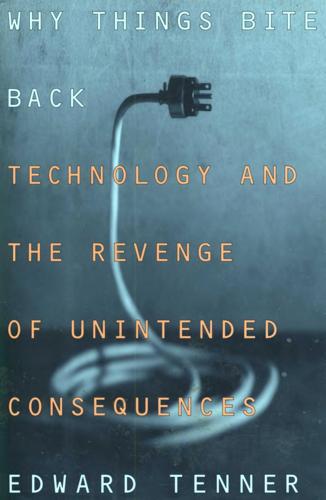
Why Things Bite Back: Technology and the Revenge of Unintended Consequences
by
Edward Tenner
Published 1 Sep 1997
Software code, like laws and sausages, should never be examined in production. Indeed, it seldom is—if only because today's developers write code in teams, each member producing a small part of an increasingly bulky and complex whole. There is no software equivalent of Tracy Kidder's hardware odyssey, The Soul of a New Machine. There is, however, an excellent contrast in Lauren Ruth Wiener's Digital Woes, the best general-interest explanation to date of why and how computer software is inherently unreliable. Some of the stories she and others tell are chilling. In the mid- 98os a computer at the Bank of New York began overwriting data on government securities transactions.

The Age of Spiritual Machines: When Computers Exceed Human Intelligence
by
Ray Kurzweil
Published 31 Dec 1998
“Computers, Networks and Education.” Scientific American, September 1991. Kelly, Kevin. Out of Control: The New Biology of Machines, Social Systems and the Economic World. Reading, MA: Addison-Wesley, 1994. Kent, Ernest W The Brains of Men and Machines. Peterborough, NH: BYTE/McGraw-Hill, 1981. Kidder, Tracy. The Soul of a New Machine. London: Allen Lane. 1982. Kirk, G. S., J. E. Raven, and M. Schofield. The Presocratic Philosophers. Cambridge: Cambridge University Press, 1983. Kleene, Stephen Cole. Introduction to Metamathematics. New York: D. Van Nostrand, 1952. Kline, Morris. Mathematics and the Search for Knowledge.
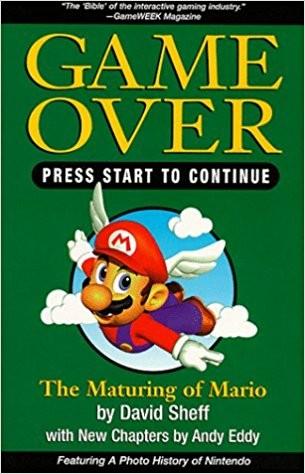
Game Over Press Start to Continue
by
David Sheff
and
Andy Eddy
Published 1 Jan 1993
Ishihara, Shintaro, and Akio Morita, No to ieru Nihon [The Japan That Can Say No] (Tokyo: Kobunsha, 1990). “Japan Goes Hollywood,” Newsweek, October 9, 1989: 62–72. Japan Publications (ed.), Hanafuda: The Flower Card Game (Tokyo: Nichibo Shuppan-sho, 1970). Katz, Donald R., “The New Generation Gap,” Esquire, February 1990: 49–50. Kidder, Tracy, The Soul of a New Machine (Boston: Little, Brown, 1981). “Less Fun, Few Games? Toy Industry Analyst Is Bearish on Nintendo,” Barron’s, December 3, 1990: 16–63. Levine, David, “Special Effects: Broadcast Arts Has Created a New Genre in the World of Television,” Continental Profiles, April 1991: 23–40. Levy, Richard C., and Ronald O.

More Joel on Software
by
Joel Spolsky
Published 25 Jun 2008
Now, it would be shockingly presumptuous of me to try to guess what happened on the Chandler team, and why it’s taken them millions of dollars and several years to get to where they are now, which is, they have a pretty buggy and incomplete calendar application that’s not very impressive compared to the fifty-eight me-too Web 2.0 calendars that came out last year, each of which was developed by two college kids in their spare time, one of whom really mostly just drew mascots. Chandler doesn’t even have a mascot! Like I say, I can’t presume to know what went wrong. Maybe nothing. Maybe they feel like they’re right on track. Scott Rosenberg’s excellent new book, which was supposed to be a Soul of a New Machine for the hottest open source startup of the decade, ends up, in frustration, with Scott cutting the story short because Chandler 1.0 was just not going to happen any time soon (and presumably Rosenberg couldn’t run the risk that we wouldn’t be using books at all by the time it shipped, opting instead to absorb knowledge by taking a pill).
…
Again, I must forcefully apologize to the Chandler team if Rosenberg missed the point somehow, or if he gave a completely incorrect impression of what was really holding up progress, and my bias—to blame these kinds of debacles on a failure to design—is showing. All that said, one good thing did come out of the project: a fascinating book in the style of Soul of a New Machine and Showstopper about a software development project that failed to converge. Highly recommended. fourteen CHOICES = HEADACHES Tuesday, November 21, 2006 I’m sure there’s a whole team of UI designers, programmers, and testers who worked very hard on the Off button in Windows Vista, but seriously, is this the best you could come up with?
…
See also managing people; office space; recruiting developers customer service accepting blame, 249 career paths for employees, 254 memorizing phrases, 250–251 not taking matters personally, 251–252 overview, 245 permanent fixes to problems, 245–246 preserving customer’s dignity, 247 refund policies, 252–253 turning customers into fans, 247–248 first month’s profit, 209–210 growth of business, excitement of, 204–205 not starting alone, 209 providing solution to a problem, 208–209 talented developers and programmers, 211–220 software developers. See recruiting developers Software Development Engineers in Test (SDETs), 64 solutions to problems, offering, 151–154 Soul of a New Machine (book), 97 source code, access to, 227–230 specifications, and quality, 6, 63–65 specificity, in design, 96 stamps, 96 standards, web, 125–137, 139–141 Structure and Interpretation of Computer Programs (book), 54 style, 218 subpixel rendering, 85–87 sunk costs, 266 Switch User option, 100 Symphony, Lotus, 171 systems creation, 44–45 Systems Hungarian, 196 T Taleb, Nassim, 286 talented software developers, 216–220 tasks creating, 158–159 prioritizing, 292–293 Index 305 teams agendas of, 35 problems of designing as, 95 small, benefits of, 216–217 tech conferences, 11 tech support.

The Code: Silicon Valley and the Remaking of America
by
Margaret O'Mara
Published 8 Jul 2019
Self, American Babylon (2003) and Isaac William Martin, The Permanent Tax Revolt (2008). My discussion of Boston and its tech ecosystem drew on a number of studies. The “father of venture capital,” Georges Doriot, is the subject of Spencer E. Ante, Creative Capital (2008). Tracy Kidder’s now-classic The Soul of a New Machine (1981) captures the fever of the minicomputer product development cycle, and Steven Levy’s Hackers (1984) captures the early MIT computer scene with vivid intensity. Lily Geismer, Don’t Blame Us (2014) discusses the demographic and political dynamics propelled in part by the presence of the tech industry in and around Boston.
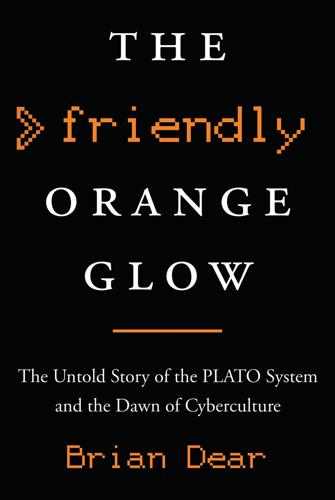
The Friendly Orange Glow: The Untold Story of the PLATO System and the Dawn of Cyberculture
by
Brian Dear
Published 14 Jun 2017
Reading, MA: Addison-Wesley, 1985. Kearsley, G., ed. Online Learning: Personal Reflections on the Transformation of Education. Englewood Cliffs, NJ: Educational Technology Publications, 2005. Kent, S. L. The Ultimate History of Video Games. Roseville, CA: Prima Publishing, 2001. Kidder, T. The Soul of a New Machine. New York: Avon, 1981. Kingery, R. A., R. D. Berg, and E. H. Schillinger. Men and Ideas in Engineering: Twelve Histories from Illinois. Urbana: University of Illinois Press, 1967. Koster, R. “The Online World Timeline—Ralph’s Website.” Retrieved 2016-06-23 from http://www.raphkoster.com/games/the-online-world-timeline/.
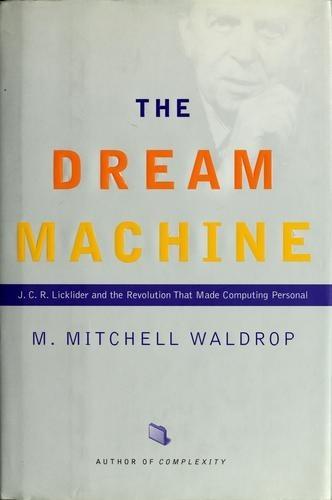
The Dream Machine: J.C.R. Licklider and the Revolution That Made Computing Personal
by
M. Mitchell Waldrop
Published 14 Apr 2001
The first and largest of the line, the refrigerator-sized VAX- 11/780, sold for $120,000 in its most basic configuration and was an instant hit. Every other minicomputer maker was left to play catch-up-especially Data Gen- eral. (That company's struggle to produce an answer to the VAX would be beau- tifully chronicled in Tracy Kidder's 1981 book, The Soul of a New Machine.) By 1977 DEC's revenues had passed $1 billion per year. Along the way, meanwhile, all of these increasingly high-powered minicom- puters had rolled right over the faltering "computer utility" industry. After all, why should anybody pay upward of ten dollars an hour in connect charges per user-twenty thousand dollars for a year of eight-hour days-when that same money would buy a mini that could support a dozen users?
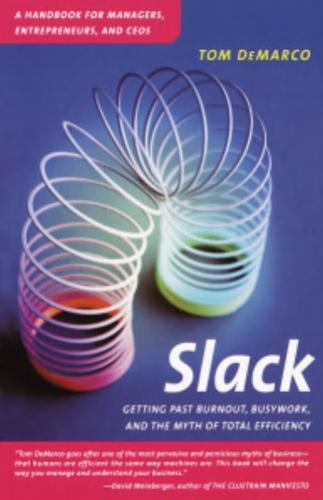
Slack: Getting Past Burnout, Busywork, and the Myth of Total Efficiency
by
Tom Demarco
Published 15 Nov 2001
When companies conduct exit interviews of their departing employees, overtime is a frequently cited cause of the departure. When people feel used, when the fragile balance of their lives is upset by increasing pressure on their families, they’d be crazy not to think of moving on. Many of them do. For example, in Soul of a New Machine, the retrospective of Data General’s overtime-intensive Eagle Project, the author, Tracy Kidder, reports that every single member of the Eagle team was gone within a month of the end of the project. Even those who stayed on till the end (and many didn’t) were unwilling to continue working for the kind of company that had so used them.
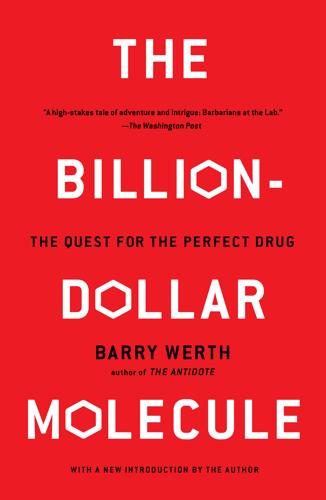
The Billion-Dollar Molecule
by
Barry Werth
—Sandra Panem, Science “The liveliest and most revealing story written so far about the biotech industry.” —Clive Cooksen, Financial Times “An authoritative book about science and the business of science. It is also a fascinating, gripping tale about real people working under extreme pressure in pursuit of what seems like an impossible goal.” —Tracy Kidder, author of Soul of a New Machine “Timely, fascinating, fast moving story . . . brilliantly written.” —Ezra M. Greenspan, M. D. Clinical Professor of Medicine (Oncology) The Mount Sinai School of Medicine Medical Director, Chemotherapy Foundation Thank you for downloading this Simon & Schuster eBook. * * * Join our mailing list and get updates on new releases, deals, bonus content and other great books from Simon & Schuster.